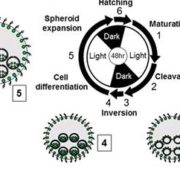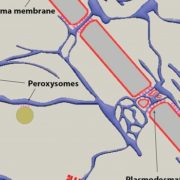Update: Monitoring Polysaccharide Dynamics in the Plant Cell Wall
 By Catalin Voiniciuc, Markus Pauly, and Björn Usadel
By Catalin Voiniciuc, Markus Pauly, and Björn Usadel
All plant cells are surrounded by complex walls that play a role in growth and differentiation of tissues. Walls provide mechanical integrity and structure to each cell, and represent an interface with neighboring cells and the environment (Somerville et al., 2004). Cell walls are composed primarily of multiple polysaccharides that can be grouped into three major classes: cellulose, pectins, and hemicelluloses. While cellulose fibrils are synthesized by the plant cells directly at the plasma membrane (PM), the matrix polysaccharides are produced in the Golgi apparatus by membrane-bound enzymes from multiple glycosyltransferase families (Oikawa et al., 2013). After secretion to the wall via exocytosis, the structures of the non-cellulosic polysaccharides are modified by various apoplastic enzymes. In addition to polysaccharides, most plant cell walls contain small amounts of structural proteins such as extensins and arabinogalactan proteins.








